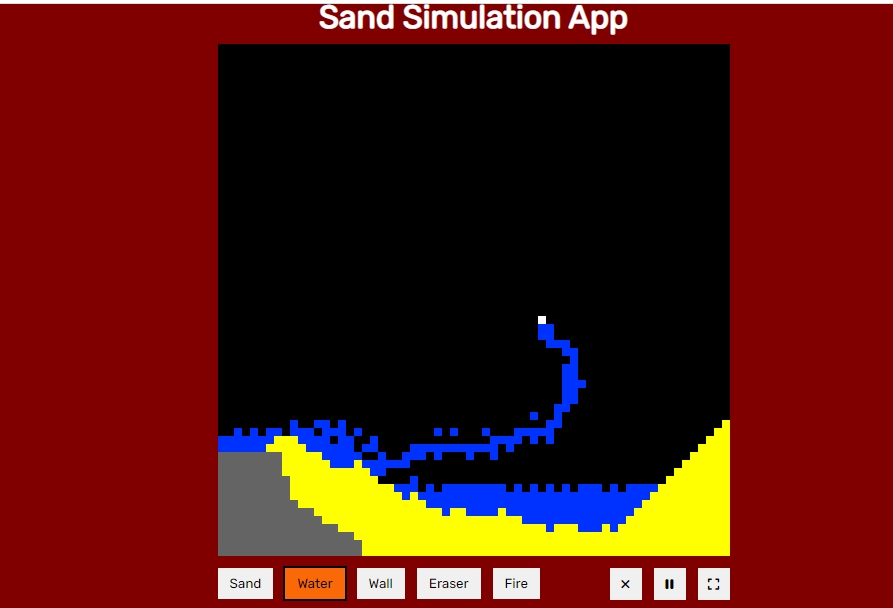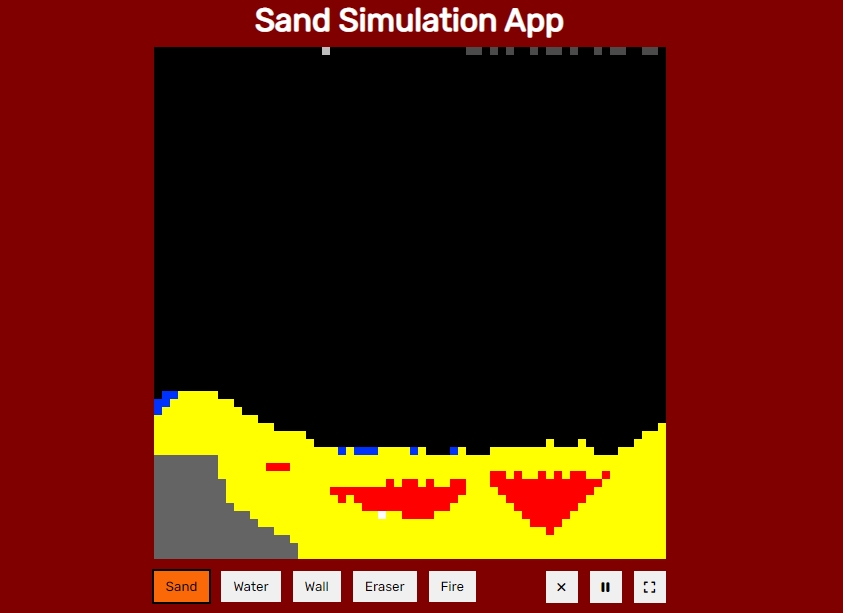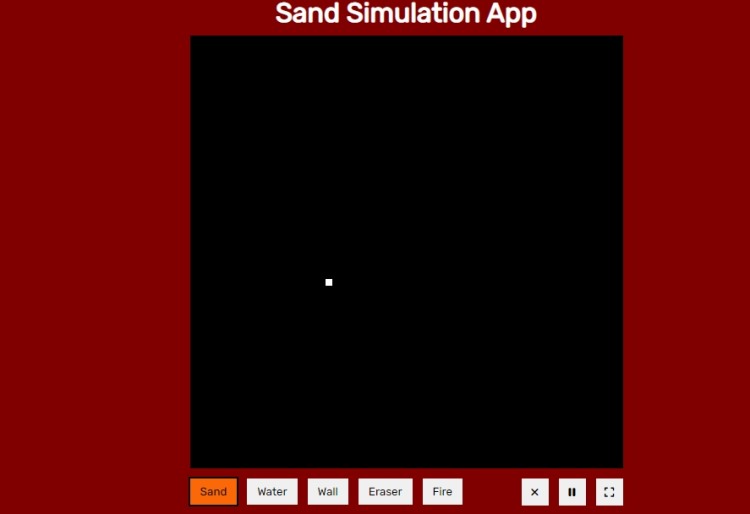Sand Simulation App using HTML & CSS in JavaScript with Source Code
The Sand Simulation App is a lightweight web application built entirely with JavaScript. It features a user-friendly interface that simulates the interaction of sand with other elements, offering a visually engaging experience. The Sand Simulation App in JavaScript is an excellent project for beginners, as it demonstrates how to replicate the behavior of natural elements like sand through code. It also provides a valuable opportunity to practice and enhance fundamental programming skills, particularly in implementing algorithms, handling user input, managing event listeners, and manipulating the DOM.
The Sand Simulation App using HTML & CSS in JavaScript with Source Code is free to be downloaded just read the content below for more info. This application is for educational purpose only.
Sand Simulation App using HTML & CSS in JavaScript with Source Code Basic Information
- Language used: JavaScript
- Front-end used: HTML & CSS
- Coding Tool used: Notepad++ or any text editor that can run html files
- Type: Web Application
- Database used: None
About Sand Simulation App
The Sand Simulation App in JavaScript is an engaging and visually appealing web-based project that simulates the natural behavior of falling sand particles. Using the HTML5 Canvas API along with JavaScript, the app creates a dynamic environment where users can draw or place sand particles that interact with gravity and each other in real-time. The particles fall, pile up, and spread realistically, mimicking how sand behaves in the physical world. This simulation is powered by simple physics rules and an animation loop that updates particle positions frame by frame. Users can experiment freely, creating various patterns or watching how sand flows and settles over time. The app may also include features like selecting different materials (e.g., sand, water, stone), adjustable brush sizes, or reset functionality to enhance interactivity. It serves as both a fun digital toy and a basic educational tool for understanding physics-based simulation and particle systems in JavaScript.
Sand Simulation App using HTML & CSS in JavaScript with Source Code Features
- Realistic Particle Behavior
- Sand particles fall under gravity and interact with their environment.
- Particles settle naturally and slide if space is available beside them.
- Draw Tool for Interaction
- Users can click and drag to spawn sand or other particles.
- Some versions support switching between materials (like water or stone).
- Canvas-Based Simulation
- Utilizes the HTML5 canvas element for fast pixel rendering.
- Each cell represents a particle's state, updated every animation frame.
- Responsive & User-Friendly UI
- Easy to use interface suitable for students and professionals.
Sample Application Screenshot:



Sand Simulation App using HTML & CSS in JavaScript with Source Code Installation Guide
- Download the source code in this site.
- Locate and Extract the zip file.
- Open the extracted folder
- Find and locate the file "index.html".
- Open the file in a web browser(Chrome, Firefox, etc..).
That's all, The Sand Simulation App was created fully functional using JavaScript language. I hope that this project can help you to what you are looking for. For more projects and tutorials please kindly visit this site. Enjoy Coding!
The Sand Simulation App using HTML & CSS in JavaScript with Source Code is ready to be downloaded just kindly click the download button below.
Related Projects & Tutorials
Sand Simulation App in JavaScriptNote: Due to the size or complexity of this submission, the author has submitted it as a .zip file to shorten your download time. After downloading it, you will need a program like Winzip to decompress it.
Virus note: All files are scanned once-a-day by SourceCodester.com for viruses, but new viruses come out every day, so no prevention program can catch 100% of them.
FOR YOUR OWN SAFETY, PLEASE:
1. Re-scan downloaded files using your personal virus checker before using it.
2. NEVER, EVER run compiled files (.exe's, .ocx's, .dll's etc.)--only run source code.

